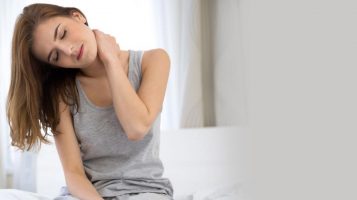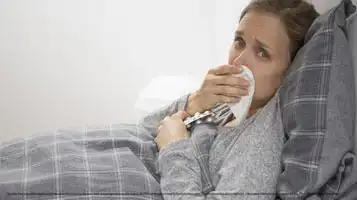It’s Official “Zepbound To Reduce Sleep Apnea In Obese People”

Eli Lilly, the fabled drug maker announced the entry of a new drug ‘Zepbound’ in reducing sleep apnea, in their press release on 17th April 2024.
The National Council on Aging reports Obstructive Sleep Apnea (OSA) affects almost 40 million U.S. adults at present. The sleep disorder cuts off airflow into our lungs causing cardiac arrest, arrhythmia, hypertension, pulmonary stress and even cardiomyopathy if left untreated for long.
To make the scenario worse, obesity can increase the risks associated with sleep apnea.
This is where Zepbound plays a role as a ‘miracle drug’. It can help reduce obesity and in turn treat OSA. Reports show that with approx. 10% loss in body weight sleep apnea events reduce by 11 times in an hour.
But is all good with the new drug? Are there any side effects? Can pregnant or nursing mothers use it? Considering its high price range, can you get the drug insured? Does your sleeping style affect sleep apnea?
I’ve detailed on all these facts and more below.
What Is ‘Zepbound’?
Zepbound: Eli Lily’s Weight Loss Drug in Sleep Apnea
Obstructive Sleep Apnea (OSA) causes breathing difficulties when you sleep due to blockage in the upper respiratory tract. This breathlessness can extend during daytime and lead to headaches, lack of energy, fatigue, risk of cardiovascular disease or diabetes. Sleep apnea does not affect your physiology alone, but also creates an impact on your mental wellbeing.
How does ‘Zepbound’ play a role here?
OSA patients have shown positive results like relief from apnea when they were taking Zepbound as an anti-obesity pill.
Eli Lilly, the infamous drug maker announced this in their press release on 17th April 2024.
The chemical name of Zepbound is tirzepatide and it has been approved by Food and Drug Administration (FDA) since November 2023 for chronic obesity. Previously FDA approved tirzepatide for treating Type II diabetes as Mounjaro (brand name).
Results on Sleep Apnea Related Breathing Difficulties
Let’s get to the point.
- OSA patients who were taking the anti-obesity drug Zepbound, showed fewer episodes of sleep apnea or breathlessness.
- Eli Lilly extended the research further by comparing patients who used the Continuous Positive Airway Pressure (CPAP) machine for OSA and people who did not use CPAP.
- The research suggests that those patients who recovered from breathing difficulties also lost a significant amount of body weight after taking Zepbound for a year. So sleep apnea showed direct proportionality with weight loss and vice versa.
Experiment
The entire research consisted of three experiments and different clinical trials.
- The 1st research consisted of 400 adult respondents. These participants were all suffering from OSA and clinical trials were conducted for a period of 2 years. Eli Lilly wishes to publish the analysis of the research on the 84th session of American Diabetes Association.
Christine Ren-Fielding, MD and chief of NYU Langone’s Bariatric Surgery division, quotes that “Eli Lilly’s research holds promises on sleep medication to treat sleep apnea. The data is significant enough and has shown positive response in obese adults suffering from OSA.
However, people suffering from Central Sleep Apnea (CSA) were excluded, as CSA is caused due to improper signal transmission from our brain to motor nerves and muscles involved in breathing.
- In the 2nd study involved respondents who did not prefer the CPAP machine-based treatment. Now this is a widely prescribed treatment for sleep apnea. CPAP treatment was replaced by weekly Zepbound injections instead.
- The 3rd study comprised of respondents who used CPAP machine only throughout the study period. 50% of them received Zepbound and the rest underwent placebo treatment.
Observation
- In the 1st study of Zepbound and its efficacy, respondents selected were obese and suffered from moderate and/or severe OSA. This refers to patients experiencing 15 episodes of breathlessness every night or even more.
- A year’s observation in the 2nd study showed that after receiving Zepbound treatment patients had fewer episodes of sleep apnea, averaging 27.4 per hour.
- The 3rd experiment showed that patients who were taking tirzepatide group had fewer episodes of sleep apnea, averaging 30.4 per hour. This was in comparison to average reduction of events amounting to 6 episodes per hour in placebo treatment.
In all the studies, respondents/patients had reported a significant reduction in body weight by as much as 20%.
But, every medication or drug needs to be taken after proper consultation with healthcare practitioners as they hold deleterious side effects depending on your patient history, body type or genetic factors. Let’s detail into this.
Side Effects of Zepbound
Here I have listed some possible side-effects of Zepbound as a sleep medication.
- Thyroid Cancer
Tirzepatide compound is known to cause thyroid tumors and even cancer. If you are suffering from troubled swallowing, breathlessness, hoarseness or a lump in your neck, pay a visit to your doctor immediately. If you have family histories of Medullary-Thyroid-Carcinoma (MTC) then please refrain from using Zepbound.
- Multiple Endocrine Neoplasia (MEN Type 2)
People with MEN Type 2, should not be using Zepbound as a medication for sleep apnea or obesity. This is a strict no for them.
- Allergic Reaction
In case you suffer from any allergic reaction in suing tirzepatide or Zepbound then refrain from use. Sudden swellings of your lips, throat, tongue or face followed by rashes or itching, feeling dizzy or rapid heartbeat are symptoms of allergy and you need to be cautious here.
- Stomach Problems
If you suffer from prolonged and severe gastric problems, do contact your healthcare provider.
- Kidney Failure
Symptoms like vomiting, diarrhea, dehydration or nausea can all lead to kidney issues and failure if they remain untreated for prolonged period. Ensure to keep hydrated all day long as your body needs electrolytic fluids to perform all the daily activities.
- Pancreatitis
If pain in your upper abdomen follows the use of Zepbound, stop the medication right away and contact your healthcare provider. The pain may spread from the abdomen to your back and may be associated with vomiting or may not.
- Gallbladder Issues
Those using Zepbound have reported to have gallbladder problems followed by upper abdomen pain, yellowing eyes/skin (jaundice), fever or clay-colored feces.
- Hypoglycemia
Low blood sugar content can be caused due to Zepbound, if used together with insulin or sulfonylurea. You may start to experience symptoms like – shakiness, irritability, slurred speech, drowsiness, headache, faster heartbeat, hunger, confusion or a jittery feeling.
- Vision Changes
People with diabetes (Type 2) have reported suffering from vision problems during Zepbound treatment.
- Depressive Mental State
Be a bit more attentive to your mood. If you have sudden mood changes, feelings, behavioral disruptions or irregular thoughts do contact your healthcare provider right away.
- Common Side Effects
Indigestion, stomach pain, diarrhea, constipation, dehydration, nausea, allergies, tiredness, hair loss, heartburn and belching are all other side effects of Zepbound injection reaction.
Please don’t dilly-dally and immediately contact your healthcare practitioner if you suffer from any of these aforementioned side effects.
Word of Caution: Do’s and Don’ts
How to use Zepbound as a sleep medication for apnea?
You need professional guidance from your family medical practitioner in case you are using this drug for the first time. Open up to your doctor.
Questions You Should Ask Your Doctor
Be prepared to ask your doctor the following questions.
Q1. Would I be prone to hypoglycemia if I use Zepbound with insulin OR medicines for diabetes?
Q2. How do I manage low blood sugar levels or low BP?
Q3. Can I use Zepbound if I take birth control pills or PCOS hormonal pills orally?
Q4. Will birth control pills work when used in combination with Zepbound medication?
Q5. Can you recommend other types of contraceptive pills that I can have with Zepbound?
Apart from these questions, stay prepared to answer these questions and open up to your doctor. Be sure to provide insights about your patient history and carry your health records with you.
Questions Your Doctor May Ask You
Q1. Are you presently suffering from any gastric problems, stomach issues, pancreatitis or kidney issues?
Q2. Do you have digestion problems or gastroparesis?
Q3. Do you often take sulfonylareas, insulin or diabetes medicines?
Q4. Are you currently on any prescription drugs or over-the-counter medications, vitamin supplements or herbal medicines?
Q5. Do you have a patient or a family history of diabetic retinopathy?
Q6. Are you pregnant or planning to have a child?
Q7. Do you have an infant who you are breastfeeding currently?
Q8. Have you conceived recently while on a dosage of Zepbound medication?
For more information on Zepbound, go to www.zepbound.lilly.com.
Apart from this information, read your prescription well and be sure to consult your doctor at every step of your treatment. Routine observation of symptoms and a visit to your practitioner is highly recommended.
How Is Obesity Interrelated to Sleep Apnea?
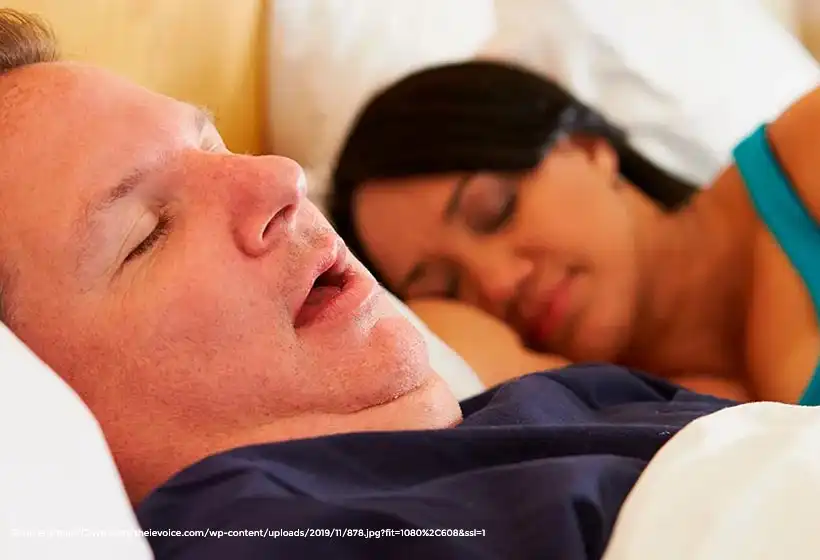
Science Behind It
One important causative factor of sleep apnea, particularly OSA, is obesity. To understand why, we need to understand how OSA develops.
In OSA our throat’s soft tissues collapse periodically leading to breathlessness. This sleep disorder is known to affect as many as 39 million U.S. adults as per reports from National Council on Aging.
Apnea is thereby common in obese individuals as they have a thicker tissue in and around their throat.
What Happens When You Are Having a Sleep Apnea Episode?
Science behind sleep apnea episodes explained for you.
When a person has an episode the tissues inside their throat collapses and it causes breathlessness. This causes a chain of events.
First, the chest muscles and diaphragm start to work harder to open up the close air tract causing blood pressure changes. Second, the flow of oxygen to vital body organs starts to reduce. Left untreated for long, it leads to hypertension, irregular heart rhythm, stores or cardiac arrests. When the breathing finally resumes, the body jerks. The person’s breathing starts with a loud gasping sound due to a large inflow of air into the air tract.
Statistics – Sleep Apnea
- Approximately 85% of people with OSA suffer from obesity.
- 25% of men get affected with sleep apnea, in comparison to a lesser section of women (10%).
- You can suffer from this sleep disorder irrespective of your age. However, it is more prone in those above 40 years in age.
Treatment for Sleep Apnea
The present day treatment revolves around the symptoms of this disorder, and strategies to relieve them. For example, breathlessness is a common symptom and present day treatments are all symptomatic.
How is Zepbound different?
The compound tirzepatide focuses not on the symptoms but on the underlying condition i.e. blocked airways.
When a person is obese, there is higher fat accumulation near and about the inner lining of the tongue and neck. This is one of the primary reasons of blocked airflow when the person is asleep. This is more prone in back sleepers i.e. people who prefer to sleep on their back rather than sleeping on the side.
A point to note. Sleep apnea is related to your sleeping position – side sleeper/back sleeper/stomach sleeper/combination sleeper. I will be detailing on this in the underlying section.
So, it’s obvious that these people keep waking up repeatedly in their sleep all through the night. On a prolonged basis, OSA leads to serious health effects like – cardiac arrests, neurologic issues or mental health issues.
By now it’s clear that obesity can cause sleep apnea. But can it be the other way round too?
Yes, sleep apnea can in fact worsen obesity.
This is because people who fail to get a peaceful night’s sleep and suffer from sleep disruption tend towards sugary foods or coffee to remain awake during daytime hours. This leads to obesity and weight gain. Lack of proper rest, can also wreck havoc in the hormonal balance of your body, causing stress and in consequence, weight gain.
For most patients losing weight can help to relieve sleep apnea. It helps to reduce approximately 11 episodes if a person loses at least 10% of their body weight on an hour basis.
Even with surgical treatments like bariatric surgery and gastroplasty sleep apnea events and symptoms get reduced significantly.
According to Mir Ali, MD, Medical Director (Orange Coast Medical Center, California),
“Surgical weight loss in patients has proved that just a few months post surgery sleep apnea patients do not require their CPAP devices and that they feel better and sleep uninterrupted for hours.”
The patients benefit from weight loss in multifaceted ways – from reduced sleep apnea episodes to improvement in pressure and diabetes.
Can Bariatric Surgery Relieve Sleep Apnea?
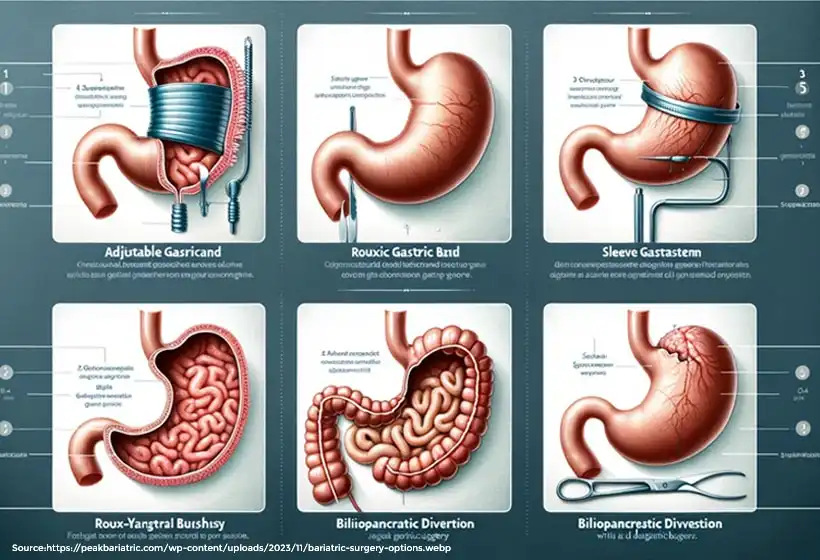
Sleep apnea is a sleep disorder that’s potentially risky and should not be left untreated. If so, it can lead to unfavorable complications in the long term. Problems like – stroke, high blood pressure (hypertension), congestive heart diseases, heart attacks, diabetes, arrhythmias and cardiomyopathy are common problems that will arise sooner or later.
So it’s recommended to get started with the treatment as soon as the problem is identified. Treating sleep apnea using a management strategy that works right for you is necessary, as it’ll not only boost your energy but improve your concentration and quality of living in the long run.
Many people face job impairment when sleep apnea episodes simply go out of hand. Accidents and poor lifestyle issues start to surface. So, it’s best to nip the problem at the bud.
Doctors always prefer CPAP as an initial treatment strategy for OSA patients. Here, a patient wears a mask over the mouth and nose and it remains connected to a blower. This air blower pushes air through the mouth and opens the blocked trachea or respiratory tract.
However using a CPAP machine is a temporary solution. If you want to opt for a permanent cure then reducing weight and fighting obesity is the way to go.
Bariatric surgery plays a role in reducing your weight and in removing fat cells from in and around your cheeks, throat and neck. It causes remission from sleep apnea in approximately 85% patients who have undergone the surgery.
Thus, CPAP treatment can reduce sleep apnea but not entirely cure apnea completely. Surgical interventions like bariatric surgery can bring about a lasting resolution by reducing obesity. Likewise, Zepbound drug treatment can help you reduce weight and present a permanent solution for sleep apnea.
Now, let’s get back to Zepbound and whether you can get the drug insured.
Should You Get an Insurance Coverage?
Till date Zepbound is the brand name under which the compound tirzepatide is being sold for fighting obesity in adults. With the new research undertaken by Eli Lilly and the findings pointing out the positive results that tirzepatide shows in sleep apnea, Zepbound’s labeling may be changed by the FDA. This will allow Zepbound to be prescribed for people with sleep apnea.
It is also true that due to high cost investment of the drug, many investment companies declined from covering this drug when it was solely being prescribed for weight loss.
Priced at $1,000 the drug Zepbound is highly costly but if you have an insurance coverage you will be required to pay less. Eli Lilly has come forward with a savings card which will help people without the drug’s insurance to acquire it at a price of $550.
With FDA’s approval in prescribing Zepbound for sleep apnea will comparatively make its accessibility easy and the process of getting it insured will be much simpler.
How Can Sleeping Position Play a Role in Sleep Apnea?
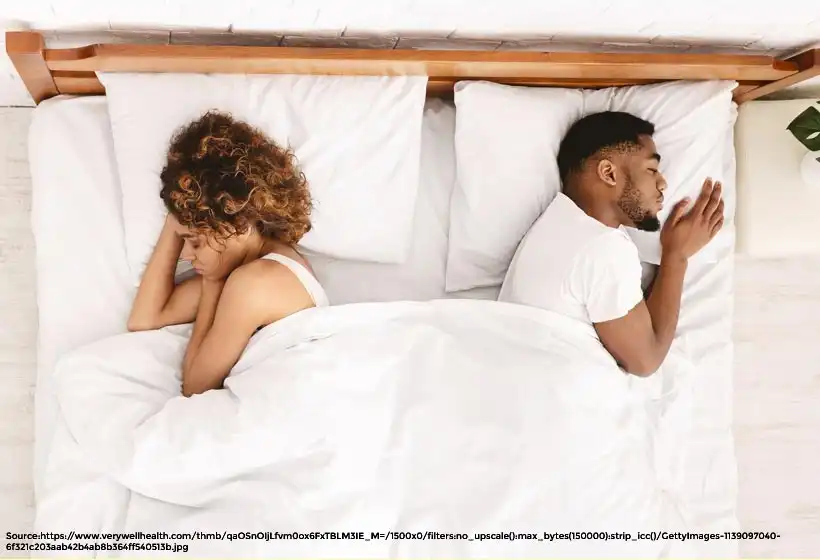
Honest answer; yes. The way you sleep or your sleeping style impacts your comfort and plays a role in either aggravating sleep apnea episodes or in relieving it.
There are 4 types of sleeping styles based on the position how you sleep i.e. side sleeper, back sleeper, stomach sleeper and combination sleeper.
Now if you are a back sleeper, and you lie down on your back while you sleep, it can increase OSA symptoms and breathlessness. In short, the severity of apnea increases. Doctors thereby suggest a change in sleeping style to alleviate symptoms of both CSA and OSA.
I’ll now guide you through the types of sleeping position and together we will figure which sleeping style is the best for you to relieve sleep apnea. Time and again I have mentioned certain strategies, head positioning alterations and solutions for your help.
1. Side Sleeping Position
This is the most recommended position by doctors and most chiropractors. Side sleeping is also suggested for pregnant women as it comes with a line of benefits. Sleep apnea events are characterized by breathlessness. When the soft tissues near and around your neck and tongue blocks the air cavity then it reduces airflow into the lungs, resulting in sleep apnea.
Sleeping on the side can align your air way in a way that it remains open and reduces sleep apnea events or even snoring.
But there’s something you must consider. Right side sleeping style bears different consequences from left side sleeping in terms of apnea. How? Read below.
-
Right Side Sleeping Position
Sleeping on your right side is an effective way to reduce Obstructive Sleep Apnea (OSA). This is due to differences in blood flow to and from your heart. The flow of blood depends on your sleeping style.
Facts to Consider: Right side sleeping position may in turn increase Gastro Esophageal Reflux Disease (GERD) or acid reflux symptoms. Sleeping on your right side relaxes the lower esophageal sphincter, so if you prominently suffer from heart burn, you need to consider altering this position.
-
Left Side Sleeping Position
Doctors consider sleeping on the left side as the most advantageous sleeping style as it comes with a range of health benefits.
For example, people with GERD, need to shift to sleeping on the left side as it provides relief from apnea and GERD symptoms. Due to the shape and position of our stomach, our esophagus and our air cavity, gravity ensures that these organs remain well aligned while we sleep. It improves airflow to the lungs and reduces acid reflux.
Additionally, doctors advise pregnant people to sleep on their left side as it reduces pressure on their liver and promotes a healthy blood flow.
Facts to Consider: People who suffer from congestive heart failure should consult their doctors before choosing this sleep position. Left-side sleeping adds unneeded stress to the heart and is normally discouraged for them.
What Other Points Should You Consider?
Mattress Age and Sleep Discomfort
If you are a side sleeper or you have been recently suggested by your doctor to sleep on the sides for alleviating sleep apnea, choose a supportive mattress that cushions all your body’s pressure zones – shoulder and neck, pelvis, knees and ankle.
If you suffer from sleep apnea and choose a side-sleeping style then you may find a memory foam mattress (soft, medium or firm) more comfortable. Again, opt for a mattress that aligns your spine while reducing pressure on joints like hips and shoulders.
I have suggested a few mattresses that you can pick from.
1. Helix Midnight Luxe
Helix Midnight mattress will turn out to be a comfortable hybrid mattress for sleep apnea and if you are a side sleeper. It’s also good for those who toss and turn during their sleep. With its 12-inch-thickness and medium-firmness it can easily relieve pressure points where side sleepers need it most: at the hips and shoulders.
Are you eager to know more? Read Review
2. TEMPUR-Adapt Memory Foam
This TEMPUR-Pedic medium-firm memory foam mattress offers a soft layer that cushions and supports the body, as well as a support layer that gives side sleepers stability and pressure relief. The mattress is covered in an antimicrobial knit cover that is cool to the touch and protects against allergens including dust mites, animal fur, and mildew.
Are you eager to know more? Read Review
2. Stomach Sleeping Position
Stomach sleeping position may help in relieving sleep apnea related breathing disruptions. Like side sleeping, sleeping on your stomach prevents tour nasal air cavity from getting blocked due to gravity.
However, sleepers may face certain challenges while lying in this position – neck rotation, shoulder pain, back pain (due to inadequate spinal support).
What Other Points Should You Consider?
-
CPAP device
If you use CPAP device for sleep apnea, then stomach sleeping style can pose difficulties. You need to wear a face mask in CPAP therapy and in stomach sleeping; your face may get pressed on the pillows while sleeping. It can also cause the mask from getting dislocated and lead to air leaks. Keep these factors in mind, while deciding on a sleeping style that aligns well with you.
-
Pay attention to your mattress
When you lie on your stomach for prolonged time, your back may start to ache as the entire weight of your body exerts pressure on to your mattress. You need a supportive bed in this case, one that properly aligns your spine and helps to maintain proper spinal posture. The mattress should be medium-firm, enough to cushion your knees, hips, abdomen and chest.
1. Avocado Green Mattress
For stomach sleepers who are suffering from sleep apnea, a relatively firm mattress is recommended by chiropractors. Avocado Green is a breathable bed consisting of eco-friendly materials – certified cotton, latex, and wool. It also has an optional pillow-top if you prefer a plush feel. Sleeping on this mattress will eventually reduce snoring and breathlessness. The cool, natural materials keep the sleep surface breathable so that you can sleep cool and uninterrupted all through the night.
Are you eager to know more? Read Review
2. Saatva Classic
Saatva Classic mattress has a blend of luxurious foam with coils (individually-wrapped) for long-lasting support that a stomach sleeper deserves for a well-rested night. A firm memory foam layer provides additional lumbar support. Soft, luxury hard, and firm are the three firmness levels offered by Saatva. For stomach sleepers, the firm mattress is ideal.
A well-balanced and supportive mattress, it has 416 tempered steel coils to support your body when you lie down. Additionally, it comes with breathability and long-term durability.
Are you eager to know more? Read Review
3. Layla Hybrid
Well, you’re in for a surprise here as – Layla Hybrid is a flippable mattress. The firmer side of this mattress is ideal for stomach sleeping. With layers of copper-infused gel memory foam and 6-inch pocketed coils this bed delivers zoned support to your body. Because it is dual-sided, choose between soft and firm support by just flipping the mattress.
Are you eager to know more? Read Review
3. Back Sleeping Position
This is one sleeping position that I would advise you against in case you have OSA. For the obvious reason that gravity can cause your tongue and throat tissues to fall backward, closing in and clocking your airways. This leads to breathless and prominent sleep apnea episodes recurring throughout the night.
It can also exacerbate snoring issues as it narrows your airways and trachea. Overall, sleeping on your back hinders proper sleep and worsens OSA symptoms.
What Other Points Should You Consider?
Elevate Your Back
If you prefer to sleep on your back and cannot change your sleeping style as per your doctor’s advice, I would recommend you to sleep at an elevated angle. Elevate the mattress by 45-degree or 60-degree and in this manner you can reduce the effect of gravity on your throat tissues. This can also alleviate snoring.
It’s important to note that finding the most suitable sleep position for sleep apnea may vary for each individual, and consulting with a healthcare professional is recommended for personalized guidance.
Use an Adjustable Bed
By sleeping with your head slightly elevated, an adjustable bed can alleviate sleep apnea and snoring.
1. iSense Hybrid Premier
This mattress is an adjustable one with around 20 firmness levels, so that you can choose a level of firmness that you need. Sleeping with sleep apnea you need to ensure that your body remains cool all through the night. The comfort system of this bed with 14 air cylinders is commendable. You can pair this bed with iSense Elite adjustable Bed base.
With so many options, I’m sure you will find an alignment and firmness that’s just right and sleep snug all night long.
Are you eager to know more? Read Review
2. Purple Mattress with Power Base
Noted for its innovative breathable foam material structure this bed isn’t air-adjustable. But here’s the take. It is compatible with the brand’s adjustable base, which is available for purchase separately. The base has under-bed illumination and a massage setting, as well as the ability to alter the position of your head.
Are you eager to know more? Read Review
3. Nolah Original
For back sleepers dealing with sleep apnea, Nolah Original mattress offers a medium comfort level, suited for light sleepers. Crafted entirely from foam, it incorporates Nolah AirFoam™ to provide a cooler sleeping experience while still offering plush comfort.
This mattress is particularly recommended for back sleeping. It is a good choice for both lightweight and average weight individuals who prefer sleeping on their backs, offering the ideal balance of support and comfort.
Are you eager to know more? Read Review
4. DreamCloud Luxury Hybrid
DreamCloud Luxury Hybrid Mattress is engineered to deliver a lavish and cozy sleep. Its hybrid design merges with a traditional spring mattress’s support and pressure relief features
It has multiple layers starting with a plush, quilted memory foam surface, followed by cooling gel-infused memory foam, and further by high-density foam for added comfort. This mattress is an ideal choice for those seeking a deluxe and restful sleep experience.
Regardless of sleep apnea, you need to select the right mattress for a restful night’s sleep and overall wellbeing.
Smart-Take!
Sleep apnea is a potentially disturbing and everyday health problem. It can lead to sleep disruptions keeping you tired and fatigued all through the day. But, every problem comes with a solution. In this scenario, gaining control of your body weight and practicing a healthy lifestyle can help you reduce sleep apnea. Zepbound can indeed help to bring your weight in control. Try changing your sleeping position, invest in comfortable bedding, incorporate light yoga and mindful eating practices in your daily routine.
Choose yourself first, cultivate happiness, and make your health a priority.
References
- Clarivate DRG. (2021). (rep.). Obstructive Sleep Apnea Epidemiology- Diagnosed prevalent cases
- Javaheri, S, Barbe, F, Campos-Rodriguez, F. et al. Sleep Apnea: Types, Mechanisms, and Clinical Cardiovascular Consequences. J Am Coll Cardiol. 2017 Feb, 69 (7) 841–858.
https://doi.org/10.1016/j.jacc.2016.11.069 - Benjafield AV, Ayas NT, Eastwood PR, Heinzer R, Ip MSM, Morrell MJ, Nunez CM, Patel SR, Penzel T, Pépin JL, Peppard PE, Sinha S, Tufik S, Valentine K, Malhotra A. Estimation of the global prevalence and burden of obstructive sleep apnoea: a literature-based analysis. Lancet Respir Med. 2019 Aug;7(8):687-698. Doi: 10.1016/S2213-2600(19)30198-5. Epub 2019 Jul 9. PMID: 31300334; PMCID: PMC7007763.
Disclaimer
The information discussed in this article is intended for general information only and should not be replaced as professional advice. It does not intend to diagnose, treat, or cure your sleep or mental health conditions. Prior to any adjustments to your sleep health routine, do consult with a qualified healthcare professional.


